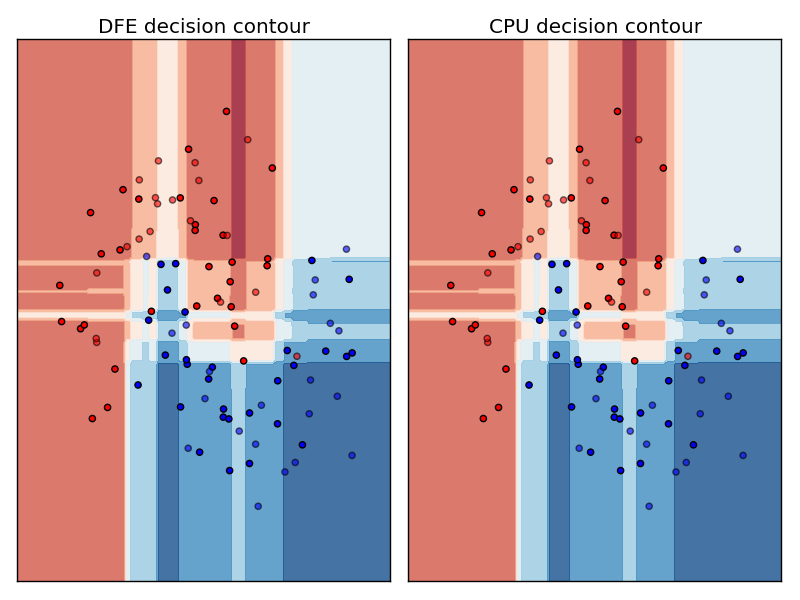To get started with the example, first:
cd CPUCode
python example_train.py
This creates a dummy dataset, and trains a BDT to classify it using sklearn.
The BDT is written to bdt.pkl so we can use it again in python, and bdtjson.txt so we can generate a DFE implementation.
Now build the DFE project:
cd RunRules/<Simulation,Maia>
make build
Create the SLiC skin:
sliccompile -t python -m maxfiles/DFEBDT.max
mv DFEBDT.py _DFEBDT.so simutils/ ../../CPUCode
Compare the sklearn GradientBoostingClassifier.decision_function output to the DFE, over the whole dataset feature range (as in the sklearn example):
cd CPUCode
python example_test.py
To make your own low latency BDT predictions, first of all train a BDT with sklearn, and write the JSON file:
import bdtToJSON
myBDT = GradientBoostingClassifier()
myBDT.fit(myTrainX, myTrainY)
with open('mybdtjson.txt', 'w') as f:
f.write(bdtToJSON.toJSON(myBDT))
Modify EngineCode/src/BDTManager.maxj to point to your JSON file. You may also want to change the data type of the features and score in the same file.
The maxj project requires json-simple and maxpower.
Running the example additionally requires python libraries sklearn, numpy, matplotlib, json.
